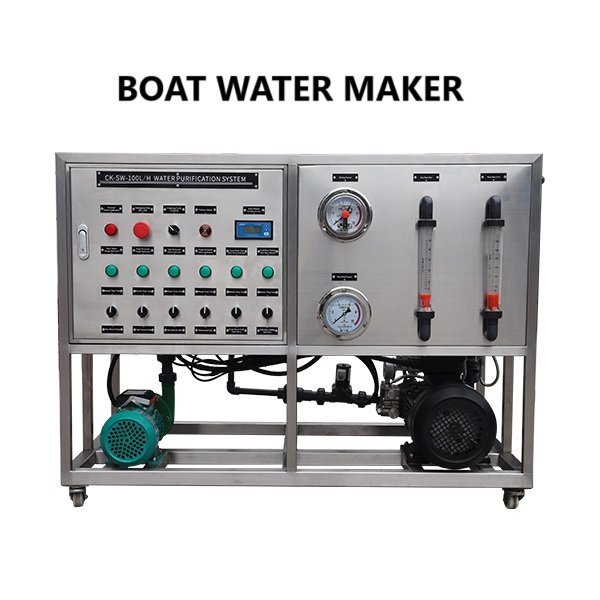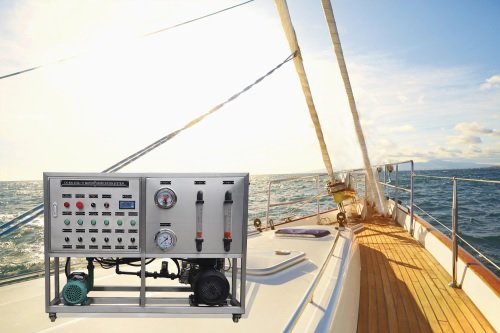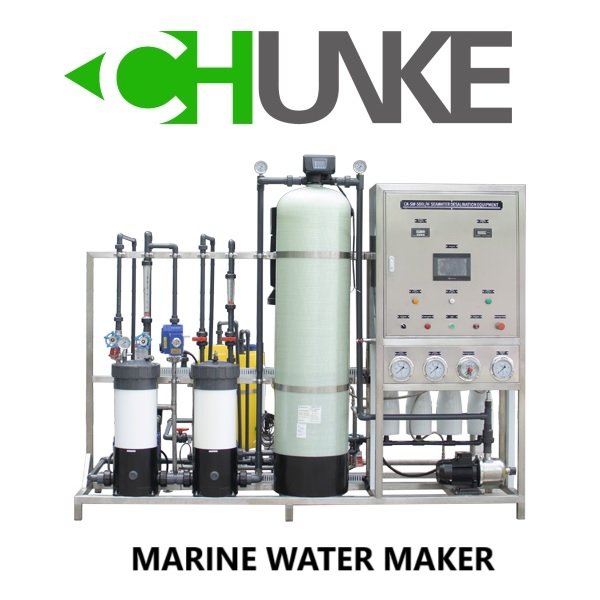
Boat water maker: When out at sea, one of the most essential resources for any boat or yacht is a reliable and efficient water supply. Running out of water can be a frustrating and limiting experience, especially during extended trips or when anchoring for extended periods. This is where boat water makers come into play, offering a solution to the problem of water scarcity on board. In this comprehensive guide, we will explore the world of marine water makers, their benefits, and the different types available. Whether you are a day fisherman, a long-range sailor, or a transoceanic yachtsman, there is a boat water maker that suits your needs.
The Importance of Marine Water Makers
Ensuring an Abundant Supply of Fresh Water
One of the primary advantages of installing a marine water maker on your boat is the ability to ensure a constant and abundant supply of fresh water. Instead of relying solely on external sources or limited onboard water storage, a boat water maker allows you to convert seawater into clean and drinkable water. This not only provides a sense of self-sufficiency but also eliminates the need to constantly restock your water supply during your journey.
Enhanced Flexibility and Independence
By having a boat water maker, you can significantly increase your flexibility and independence while at sea. You are no longer restricted to relying on marinas or specific locations with access to freshwater sources. This is especially beneficial for long-range sailors or transoceanic voyagers who may spend extended periods away from land. With a marine water maker or boat water maker, you can venture further and stay at sea for longer. Andexploring remote destinations without worrying about the availability of fresh water.
Cost-Efficiency in the Long Run
While the initial investment in a boat water maker may seem substantial, it can be a cost-effective solution in the long run. By producing your own fresh water on board. So, you can reduce or eliminate the need to purchase bottled water or rely on expensive marina services. Over time, the savings on water expenses can offset the initial cost of installing a marine water maker, making it a wise investment for avid boaters and sailors.
Understanding Desalination for Boats
The Basics of Desalination
At the heart of a boat water maker lies the process of desalination. Desalination is the removal of salt and other impurities from seawater, transforming it into clean and potable water. So, this process allows boaters to make use of the abundant seawater surrounding their vessels and convert it into a freshwater source. Meanwhile, there are different methods of desalination, but one of the most commonly used and efficient techniques for marine boat water makers is reverse osmosis.
Reverse Osmosis Technology
Reverse osmosis is a widely adopted technology for desalination on boats and yachts. So, it involves the use of a semi-permeable membrane that allows water molecules to pass through while trapping salts and other impurities. Hence, Seawater is pressurized and forced through this membrane, separating the freshwater from the concentrated brine. So, the freshwater is collected and stored for use, while the brine is discharged overboard. This process ensures that the water produced by the boat water maker meets the necessary standards for drinking and other onboard uses.
Exploring Different Types of Boat Water Maker
The CK-SW Series: Fully Automatic Megayacht & Commercial Size Watermaker

The Large CK-SW series represents the pinnacle of boat water makers. So, it is offering fully automatic operation and high capacities suitable for mega yachts and commercial vessels. Designed with one-touch operation and continuous monitoring, the Large CK-SW ensures maximum water production and quality. With a user-friendly 7-inch full-color touch screen interface, controlling and monitoring. So, the water maker becomes intuitive and effortless. The Large CK-SW is available in a range of capacities, from 2,100 gallons per day up to 3,400 gallons per day, catering to different water demands on larger vessels.,
The CK-SW: Cutting-Edge Control Technology for Efficient Water Production
The CK-SW series of boat water makers incorporates advanced control technology to optimize water production. Equipped with a 7-inch full-color icon-driven touch screen controller. So, these systems offer seamless operation and precise monitoring of key system functions. With capacities ranging from 475 gallons per day to 1,850 gallons per day. Meanwhile, the CK-SW series caters to a wide range of vessel sizes and water requirements. Furthermore, all CK-SW series systems are fully upgradeable, ensuring that your water maker can grow alongside your boating needs. To more details you can find in Commercial Sea Water Desalination System link.
Maintenance and Care for Boat Water Makers
Fresh Water Flush and Pickling for Long-Term Storage
Proper maintenance and care are crucial to ensure the longevity and optimal performance of your boat water maker. When storing the system for more than a couple of days, it is essential to perform a fresh water flush and pickling process. This simple procedure, which takes only five minutes, involves flushing the system with fresh water and using a pickling solution to prevent the growth of bacteria or other contaminants. By following this maintenance routine, you can keep your boat water maker in excellent condition, ready for its next use.
Regular Replacement of Prefilter and Impeller
To maintain the efficiency of your boat water maker, it is necessary to replace certain components at regular intervals. The prefilter, which is responsible for removing larger particles and impurities from the seawater, should be changed after 5-50+ hours of use, depending on the cleanliness of the water source. For example, cartridge filters must be change in 15 or 30 days. Additionally, the impeller in the lift pump should be replaced every one to two years, depending on usage. Regularly replacing these components ensures optimal performance and avoids any potential issues that could arise from wear and tear.

High Pressure Pump Oil Change and Reverse Osmosis Membrane Replacement
As part of routine maintenance, it is recommended to change the high-pressure pump oil every 300 hours of use, using the appropriate SAE-30 weight oil. This ensures that the pump operates smoothly and efficiently. Furthermore, the reverse osmosis membranes, which are responsible for desalination, should be replaced every 5-10 years to maintain the boat water maker’s performance. If you notice a decrease in the system’s productivity, it may be an indication that the pump seals need replacement. Regular maintenance and component replacement will help prolong the lifespan of your boat water maker.
Spares, Consumables, and Accessories for Boat Water Maker
To ensure that your boat water maker continues to operate at its best, it is essential to have access to spares, consumables, and accessories. CHUNKE Water Desalination, for example, offers a wide range of spare parts and consumables specifically designed for their water maker systems. These include filters, remotes, fluids, and other essential components that may need replacement or upgrading over time. By having access to these items, you can easily maintain and service your boat water maker, ensuring its reliable operation for years to come.
Conclusion
Investing in a boat water maker is a game-changer for boaters and sailors who value independence, flexibility, and a reliable supply of fresh water. Whether you choose the fully automatic Large CK-SW series,, or any other CHUNKE boat water maker system, you can enjoy the benefits of desalination technology on board. By understanding the basics of desalination, exploring the different types of marine water makers available, and following proper maintenance procedures, you can ensure a constant supply of clean and drinkable water on your boat or yacht. Say goodbye to water scarcity and embrace the freedom of the open sea with a boat water maker.
